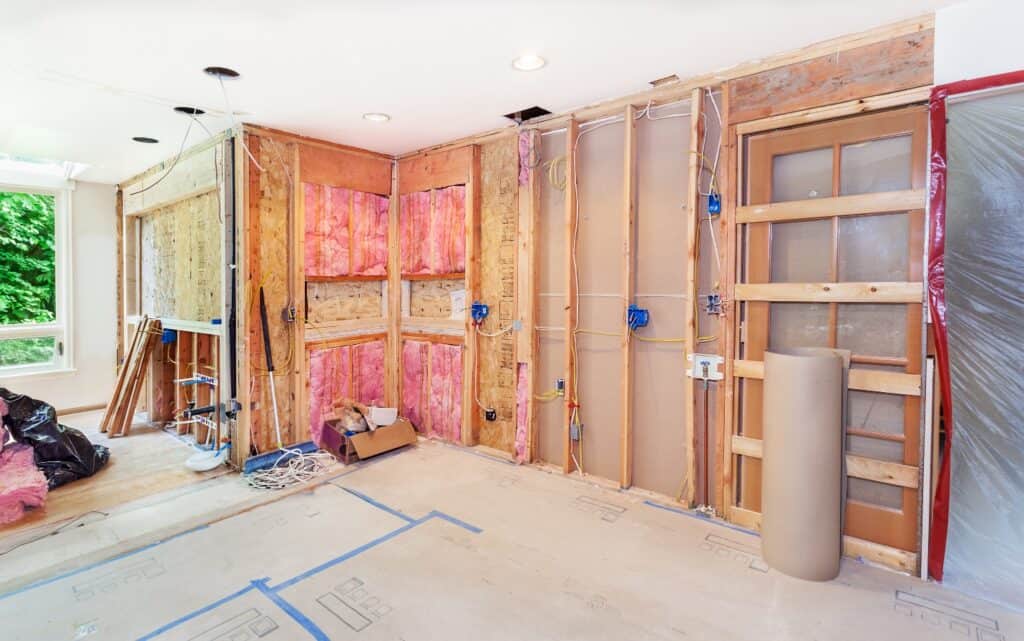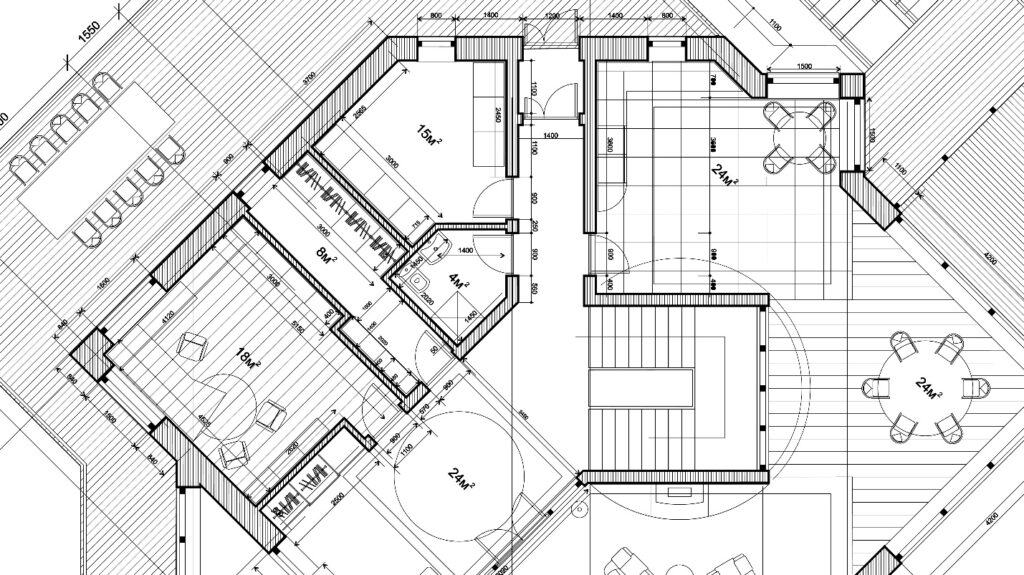
House addition planning requires a good understanding of home design principles, knowledge of house structures and the necessary research of the specific’s restrictions imposed by your building lot and the neighborhood deed.
It is due to these exact requirements that many homeowners frequently overlook this valuable construction company solutions for owners looking to enlarge their houses for household needs.
Many owners perceive these requirements for house addition planning as barriers to undertaking such projects. These owners find it just easier to sell their existing home and buy another home.
It also could just as easily be associated with the anticipated home renovation complications that most homeowners would rather avoid.
Did You Know?
Over 60% of homeowners overlook house additions as an option—often missing out on a smarter, more cost-effective alternative to moving.
Whatever the reasons, there are varies practical and value-added strategies for house addition planning or home expansion additions that can fit your growing family’s needs.
This all starts with opening your mind to considering that house additions could address your future expansion requirements.
There are many concerns to address before embarking on adding additional space to your existing home.
Defining Your Design Goals and Objectives
The first step in developing the feasibility assessment of building a home addition is to identify your expansion needs goals and objectives.
Although this might seem obvious, there is much more to this then say adding an additional bedroom.
For instance, you would like to add something as simple as a 4th bedroom to the house.
This is a fairly clearly defined goal but can impact the existing bedrooms and bathroom layout and daily service demands, as well as the increased demands of existing bathrooms.
So, you may state that as an objective to the goal you understand that 3 family members will be using the same bathroom each morning.
Another example is that if we add a new bathroom with the new bedroom, will we need to increase the water pressure by changing out the existing one.
Once these goals and objectives are identified you should allow yourself to open your thinking to different methods and means to achieve these goals.
This may include unconventional techniques and modifications such as repurposing existing space to incorporate into a home addition.
Working with our 4th bedroom idea, the working concept plan may include modifying the existing bedrooms and bathroom to achieve the best result.
Instead of adding a 10 x10 appendage to the existing envelope, your home addition process could reduce room additions to something less in current size, because we have used existing space in our new floor plan layout.
The benefit is likely to be less renovation cost because of reduced need for added foundation and new roof area.
1. Home Addition Contractor
As with anything that requires technical skills and is associated with value, it is always a good idea to surround yourself with a professional trusted adviser.
Such professional advisers would be a professional house addition contractor. There are many different types of general contractors with various skill sets that may fit your needs. Carefully vetting them is necessary for finding the contractor that is the best fit.
You would be best served by a design build contractor because they possess the skills required to quilt together all the relevant factors to make an informed and appropriate room addition decision.
There are a number of skills that design build contractors possess that a general remodeling contractor may lack in experience.
Your design build contractor will require some basic documents to start their assessment.
These would be a current lot survey, a copy of the deed restrictions, the neighborhood architectural guidelines if applicable and a copy of the original construction plans if available.
Although it is not uncommon for a homeowner to not have immediate access to these documents, your general contractor can assist you in obtaining them.
2. Structural Feasibility
Once most of these documents are obtained your general contractor can begin to determine if any expansion additions are feasibly.
This method involves examining the documents for architectural restrictions. These are items such as property setbacks and utility easements or design covenants that restrict certain building heights or window openings on zero lot lines.
All these factors play a part in determining what options are available for house addition planning.
Your remodeling contractor must also evaluate the impact the room additions will have on the roof line and house foundation.
Attaching a new structure to an existing structure can be a dicey practice. There are many engineering techniques to properly join the new structure.
If these practices are not followed properly the room additions can develop reoccurring jointing cracks and possible structural differential settlement.
3. Financial Feasibility
Once the owner and the building contractor have identified a structural feasible and an acceptable concept design, the general contractor can develop a conceptual budget range for construction cost.
If the owner is agreeable to the budget range, the home addition contractor can then develop a cost comparison analysis to evaluate the “all in price” to buy a comparable home or to build out the home addition.
This comparison analysis will provide the owner with the needed financial insights to assist in decision making.
While the financial aspects of a buy or renovate decision are important, they are not the only factors to consider.
The area schools and the neighborhood are also chief influencers for the owner’s family when evaluating to renovate or buy a new house.
These types of decisions can be very emotionally charged and require the owner to openly do some serious soul searching.
The other emotional factors can be so influential that the feasibility numbers can definitively point to one of the options being financial more attractive than the other, it does not mean that this will be the decision that is selected.
Serious consideration should be given to house addition planning when evaluating options for expanding living area for your family’s growth needs.
You might be surprised by the benefits and possible results that expanding additions can contribute to your lifestyle.
4. Home Addition Plans
Now that you have determined that a home addition is a viable solution for your needs it is time to prepare home addition plans.
Initially, preparing home addition plans should sketch out a floor plan, the elevation images of the exterior and a site map imposed over a survey for your approval and acceptance.
If you like what you see house addition planning should continue to develop a complete set of construction documents for permitting.
Once you are pleased with the home addition plans the general contractor will need to get a soil report and have the foundation and framing structure engineered before submitting construction documents for permit approval.
During this period the owners can focus their attention to selecting building products such as flooring materials, plumbing fixtures, cabinets or what decorator products that will be required.
Even if you do not actually select the products, you can identify the cost range of the products you wish to use. This will be helpful during pricing the completed construction documents.
5. House Addition Cost
House addition cost vary greatly based upon the size of the project, the function of the room, the products selected and the location accessibility of the room addition.
The product selection usually represents anywhere from 20% – 40% of the total house addition cost, depending on the function and purpose of the room.
The function of the room matters because room added like kitchens and bathrooms are far more expensive to build than bedrooms of general use room spaces.
The house addition cost is also greatly impacted by the actual location of the house addition. Typically house expansions will be located in the rear or maybe the side of the structure.
This is due that most houses are placed on the front minimum setback line and do not have the availability to build to the front.
Expanding the house envelope in the rear can be challenging to get equipment and materials to the back of the property. This greatly depends on how much room exist between the existing house and the side property line.
So, tasks such as placing concrete or roof trusses can require out of the box thinking and as a result cost considerably more than traditional applications.
Ready to Start Your House Addition Planning in Houston with Marwood Construction
House addition planning is a complex process of navigating multiple documents and careful evaluation of the many determining feasible scenarios.
Conducting the due diligence may be boring and time consuming but is an essential requirement for both preconstruction documents and construction planning.
The need to follow a defined process is important to avoid making huge and costly mistakes. Streamline this process will normally result in an unwanted result.
Working side by side with a general contractor is not required but highly recommended from the beginning. Especially if concerning the items such as the structural and financial feasibility of the project.
The take away is that a house addition is an attractive and rewarding alternative to moving because your household is getting to crowded.
Top 5 FAQs on House Addition Planning in Houston
1. What is the first step in house addition planning in Houston?
Start by defining your goals and assessing feasibility—structural, financial, and design-related. A general contractor can guide you from the start.
2. Do I need permits for a home addition in Houston?
Yes, all house additions in Houston require permits and compliance with city codes, deed restrictions, and potentially HOA guidelines.
3. How much does a typical house addition cost in Houston?
Costs vary widely, but averages range from $150 to $300+ per square foot, depending on the room type, materials, and site accessibility.
4. Who should I hire for a home addition project?
A design-build contractor is ideal—they manage both design and construction, ensuring a streamlined, budget-conscious process.
5. Is it better to add on or move to a new house?
That depends on your budget, emotional ties, school district, and neighborhood. A financial feasibility study by your contractor can help you decide.














